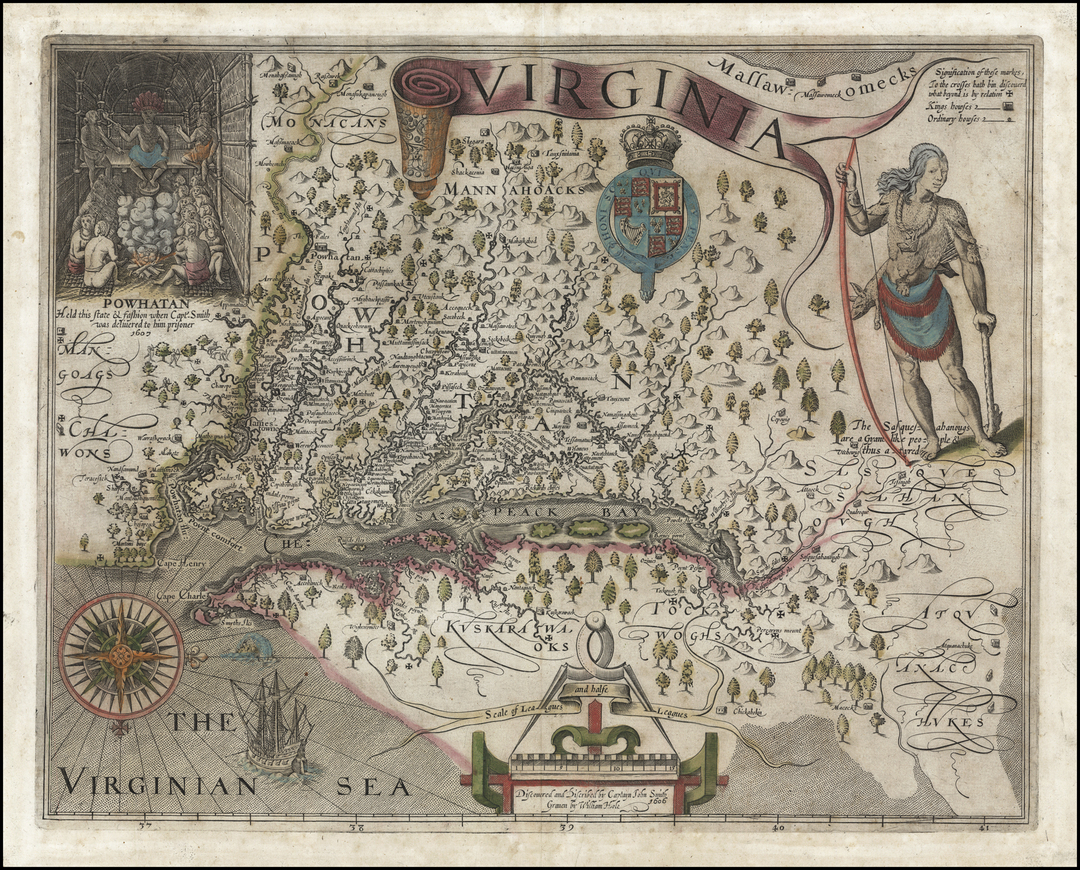Captain John Smith
During Captain John Smith's three years in Virginia, he traveled thousands of miles, exploring areas previously unknown to Europeans

Captain John Smith began a month-long journey up the Potomac River where he marveled at lands on both sides of the river, including what will become Arlington County.
On June 18, 1608: Captain John Smith began a month-long journey up the Potomac River where he marveled at lands on both sides of the river, including what will become Arlington County. Smith's explorations were not a personal quest for adventure but a fundamental goal of the Jamestown colony. At the time, Europeans had no idea how big North America was or what was inland.
The colonists were instructed by England to find a route to the Pacific; find gold, silver and any other mineral wealth; trade with the Native Americans; map the area; and claim land for the Crown. Smith led 14 men on this voyage. In search of a route to the Pacific, the group traveled north in a small wooden boat along today's Eastern Shore then moved to the Western Shore to probe the rivers now called Patapsco, Potomac, and Rappahannock.
His crew consisted of 6 men with firearms, a doctor, a carpenter for boat repair, a blacksmith, a fisherman who knew local edible fish, a tailor, and two foot soldiers who served as laborers. They spent several weeks searching for gold and dodging arrows. Nearly every day, the crew encountered native people. The meetings were mostly friendly, and the Indians gave food and help to Captain Smith and his crew. However, some tribes were hostile to the strangers. The expedition also had to cope with storms. On one occasion, Smith wrote that "the winde and waters so much increased with thunder, lighting, and raine, that our mast and sayle blew overbord and such mighty waves overracked us in that small barge that with great labour we kept her from sinking by freeing out the water."
The voyage nearly ended in tragedy when a stingray seriously wounded Smith. However, he survived and reportedly ate the ray for supper. During Captain John Smith's three years in Virginia, he traveled thousands of miles, exploring areas previously unknown to Europeans.
His two remarkable voyages of the Chesapeake in 1608 revealed the rich natural wonders of the region as well as the complex social world of the Chesapeake area Native Americans. His map, journals, and claim that "Heaven and Earth never agreed better to frame a place for Man's habitation" lured many English colonists to America and marked the start of the English presence on the continent.
Images

